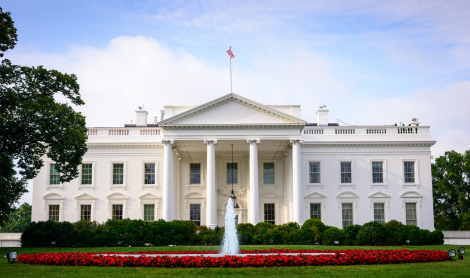With so much changing daily regarding COVID-19 and the federal response to it, it can be difficult to keep up with everything that could help support charter schools during this challenging time. That’s why NACSA has been regularly updating our blog with the latest federal news impacting the charter school sector. The National Alliance for Public Charter Schools has also been tracking and regularly updating federal resources and vital information. Below we have gathered and summarized many of the federal COVID-19 resources available to schools.
Additionally, we encourage charter schools, authorizers, and advocacy partners to contact their local Charter Support Organization (like your state charter school association or charter school incubator), as many of them have resources and capacity to provide hands-on support and will also be aware of any state-specific resources that may be available.
Supports for Schools
Education Stabilization Fund: To be distributed to SEAs and LEAs via the existing Title I formula. Estimates are that schools should anticipate about an extra year’s allocation of Title I funds. For charters that are their own LEA, they will receive a direct allocation as they normally do. For charter schools that are part of another LEA, the intent of the law is that they will receive a proportional allocation, but the process and safeguards for securing funding from the local LEA is not clear at this time. We anticipate more details from the US Department of Education. The funding is incredibly flexible and can be used for dozens of different costs.
Assistance for Emergency Protective Measures: There are two programs to assist with the cost of disinfecting eligible public facilities (like schools), conducting training specific to the COVID-19 disaster, and other school responses. First, FEMA will be distributing funds to state, who will then make grants to cities, schools, etc. for cleanup costs. Your state’s Office of Emergency Management will be handling that process and may already have released a short application to request funds. Second, the US Department of Education will be making Project SERV grants available to assist schools with cleanup activities. US ED has not released details on the timing or process yet.
Reallocation of Existing Federal Education Funds: On 4/3 USED announced an expedited process for States to request flexibility to extend fund use deadlines and modify how they are using funds under multiple programs due to COVID-19 related closures. This included grants like: Title I basic programs, Title I state assessment grants, education of migratory children, prevention and intervention programs for children and youth who are neglected, delinquent, or at risk, supporting effective instruction, English language acquisition, language enhancement, and academic achievement, student support and academic enrichment grants, 21st Century Community Learning Centers, rural and low-income school program, and McKinney-Vento Education for Homeless Children and Youth Program. Ask your SEA when it plans to apply for this flexibility and when and how you can make changes to how you are using these federal funds.
Federal Grant Flexibility: In March the Office of Management and Budget gave federal agencies new flexibilities to help grantees continue to use grant funds during this emergency. These flexibilities include things like using funds to continue grant-related payroll, pausing grant timelines, and modifying grant budgets to account for new expenses (OMB Memo). If your school has other federal grants or subgrants, such as a Charter School Program grant, it is worth reaching out to the granting agency and requesting flexibility. There is no guarantee the agency will grant requested flexibility, but it is 100% worth asking. NACSA has produced a template letter to assist you in making this request.
Supports for Families
USDA Child Nutrition Program: On 3/26 USDA granted states even more flexibilities so schools could continue offering food service to community families. Contact the child nutrition office in your state and see if they’ve made any changes that schools should know about.
SNAP and WIC Benefit Expansion: The CARES act included additional funds for food benefits for high need families. Help your schools inform parents and families about the resources available to them and the relaxed enrollment criteria.
Supports for Non-Profits and Small Businesses
Payroll Protection Loan (with option for loan forgiveness): The Paycheck Protect Program, through the Small Business Administration, backs low-interest loan for small businesses and non-profits with less than 500 employees. The SBA will forgive the loan if all employees are kept on the payroll for eight weeks and the money is used for payroll (at least 75%), rent, mortgage interest, or utilities. Work with your local bank. Student families may be owners or employees at qualifying small businesses. Let them know about the program, as it could help them continue payroll (or stay on payroll) during this time.


